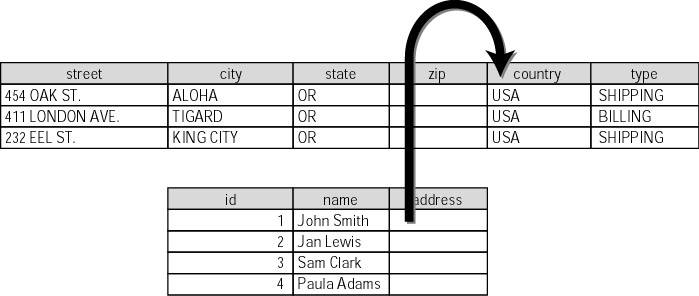A nested table is a table within a table.
Nested table is an Oracle data type used to support columns containing multivalued attributes, in this case, columns that can hold an entire sub-table.Nested tables allow items of
TABLE type to include tables with distinct column names.
| The nested table type is useful for models requiring referential integrity, and is especially suited to master-detail and one-to many relationships. |

|
Declaring a Nested Table: Syntax
Question: Create a table type called
dependents_t to hold tables of person_t objects.
|

|
person_tholds information for a single line item, anddependents_tis a table of theperson_ttype.
|
Two atoms are walking down the street. The first one sees the second one and asks, “Hey, what’s the matter? You look a little down.” The second atom says, “Yeah, I lost an electron.” The first atom says, “Oh man, are you sure?” The second atom says, “I'm positive.” |
